(ROTARY SPEECH
1 DECEMBER 2005
Introduction:
Chairperson, ladies and gentlemen. I am honoured to be here today and I hope that I will be able to give you some insight into the work of Child Welfare SA. It is very appropriate that I speak to you today, on World Aids day. Yesterday afternoon, I have received a circular from my Head office. ABSA / Barclays and SABC in partnership with CWSA and with other national organisations such as World Vision, SA Red Cross Society, UNICEF and Rotarians for Fighting Aids has launched a campaign today, titled “Making a Difference”. You can be proud that once again Rotary is there at the forefront in assisting to tackle the challenges of our time.
Background:
CWSA, previously known as SA National Council for Child & Family Welfare celebrated its 80th birthday in 2004. The work of CWSA, the biggest NGO in the country with over 170 member organisations cannot be covered in a short message. I hope to give you an overall picture and a little detail on a few important aspects.
But first, you need to have an overall view of this region.
The region stretches from Scottburgh in the north to Port Edward in the south and inland to Matatiele. It thus covers the Ugu and Sisonke municipal districts. Like all NGO’s, sustained funding is a critical concern. Within this region exists 11 child welfare organisations. Vulamehlo in the north, Umzinto, Ekubusisweni, Umzumbe, Port Shepstone, Margate, Gamalakhe, Izingolweni, Zamokhule, Kokstad and Matatiele.
My experience as a social worker for 23 years started at PX Child welfare when this organisation was just 2 years old. My grounding in organisational development was achieved at this organisation. I relocated 4 and half years later to Port Shepstone and joined the ex P/S Marburg organisation. Seven years later I was recruited to join CWSA. It is my 11th year in the position as Area Manager.
Pre 1994
Pre 1994, the services of child welfare organisations was based on racial lines. Although, some organisations were proactive in outreach work. In 1992. I was the first social worker to be seconded to Ziphakamise to undertake " Black” work. Mr. Bester will remember this. As a Commissioner of Child Welfare, he once gave me “permission to place 25 children in the care of the Harrison family. This actually gave “birth to the registration of the Emseni Children’s Home. Thank you, Mr Bester for your vision.
The first task on accepting this position in 1993 was to address the street children problems in both Margate and Port Shepstone. This was jointly facilitated with John Green, Archdeacon of the Anglican Church and your fellow Rotarian. Both the Khayalethu Shelter and Themba Club projects were initiated, are still in existence, and providing excellent services.
Needs of Region
In 1996, research undertaken, indicated huge gaps in services. There were no social services in Umzimkulu. At Matatiele, only a constitution existed. and an affiliation document. At Umzumbe, Izingolweni, Gamalakhe, Vulamehlo and Ekubusisweni , organisations were called child welfare but were in fact crèche co-ordinating committees. The vast majority of people were not only deprived of basic infrastructural needs but social welfare services. The needs of the region were overwhelming, the physical area vast and budget very limited
Achievements:
At the beginning, attempts were made to achieve “ too much” My experience then taught me to work at the pace of the community and organisations. The established organisations, Umzinto, 3 Port Shepstone organisations and Margate extended services to children and families in their immediate rural communities, with some emphasis on development. Leadership for the combined Red Nose events of 7 organisations was provided by the ex- Port Shepstone organisation. Thank you, Mrs Bester for your leadership, and not forgetting Cathy Acheson.
The working together in the Red Nose project made it easier for the 3 Port Shepstone organisations to initiate the amalgamation process. But it took 4 long years. My role as mediator was not an easy task. The amalgamated Port Shepstone organisation was established in 1998.
Prior to 1993, the Margate organisation employed one social work on a half day basis. Over the years, with many submissions to the Department, lobbying and establishing positive relationships with Department staff, 3 social work posts were awarded during the 10 year period. As of 1 December 2005 – this day, I received confirmation of 2 additional posts.
The average caseload of orphan children per social worker at Port Shepstone and Margate organisations is 650. . The HIV/Aids pandemic appears to be the highest in the Hibiscus Coast municipality. Research is needed to identify the reason for this trend. Fraudulent applications are also an increasing problem.
Our Kokstad organisation has also expanded services. The social workers increased from 3 to 8. This organisation have been proactive in the establishment of a street children Shelter, a further Shelter for Abused women and children, initiated a skills programme with school drop- outs and expanded services to the vast farmlands. Overnight there was a massive informal settlement. Children were eating from the dumpsite – Kokstad CW could not ignore their plight – the problem remained a great concern- until an Ex school principal donated a large piece of land- opposite the dumpsite. This gave birth to our Sheters and many other projects.
My predecessor’s recommendation was to “close” the Matatiele organisation. Only a constitution and affiliation document existed. Services to vulnerable children was non existent. The determination not to follow this plan of action was a challenge. From 1994 to 1997 repeated efforts to revive this organisation were unsuccessful. One fine day in 1997, I over heard at Kokstad CW that in Matatiele children are always abandoned at the Whittle doorstep. Instead of returning home, I travelled to Matatiele to meet this woman called Whittle. There was no turning back from that day onwards – the beginning of a wonderful relationship and partnership.
By 1999, the first social worker was employed. Today, we have 2 social workers, a children’s home for 50 children registered by the Dept, a Street Children’s Shelter, a Preschool, a crèche and developmental projects.
Identifying and developing community leadership is central to our developmental work.
At Umzimkulu, the Chief Magistrate was the contact person. The developmental process of establishing an organisation was initiated in 1996. By year 2001, the first social worker was employed and the office today is still situated at the Magistrate court. You can see that developmental work is a process that requires sustained and consistent effort over many years.
It took 7 years to open offices, establish professional services, implement an administration system, train staff and management, develop policies, obtain funding from various funders, and ensure financial systems and accountability at our Vulamehlo and Umzumbe organisations. Both these organisations have social workers, developmental workers and admin staff, and fully equipped. offices. The Izingolweni organisation has taken 9 long years. We received the first subsidy in October 2004. Ugu has allocated an office on a rent free basis and purchased equipment. The office was opened in February this year. Services are now in place for abused children and women. The organisation is now co- ordinating 55 projects.
Ekubusisweni is a small community of approx. 15 thousand people, situated 50 km inland from Umzinto and inland from High flats. The needs in this community were overwhelming - no running water, no sanitation, no proper roads, and no Departmental services including services by other NGOs. This community is unique. The community is predominantly made up of children and the elderly. Once schooling is over, the youth leave for the cities looking for work. Due to the needs of this community, our Umzinto organisation was requested to extend services while CWSA continued to empower the committee. 4 community members were identified and sent for training in community development. Jointly with Umzinto, business plans were submitted to various funders. At present, we have constructed the CW offices, renovated a community hall for the youth, initiated 15 garden projects, established youth projects – karate, soccer, gospel music, child protection and statutory services. Our Umzinto organisation withdrew 2 years ago and the local organisation is self sufficient. An administration system, financial records and accountability system is in place. Policies are developed with the committee on all matters of corporate governance. Of course serious challenges and frustrations remain. The most critical is the human resource turnover. As soon as a person is trained and capacitated they are snapped up by both the public and private sectors.
As of this month we have lost most of our social workers to the Eastern Cape Dept. of Welfare. We have realised that there criteria is a years’s training at a CW organisation. On my way here, Umzinto CW informed of another loss of a social worker. We are also faced with another major challenge, one of our community development workers died suddenly, another sw is critcal – not at work for over 50 days. Negotiations are taking place for the Department to “take over” some of the work in these two areas.
Home Affairs has also assisted by training our community workers. When Home Affairs were brought to Ekubusisweni for an in loco registration programme there were 345 death registrations compared to about 145 birth registrations. I leave you to draw your own conclusions about the challenges in that community and the role of social and developmental workers. Due to a wonderful relationship with Terry Kotze, lobbying for this service was a success.
I want to highlight a major practical hurdle. The social worker together with the clients have to take two taxis to reach Vulamehlo for a children court enquiry. Similar process with Home Affairs. There is nothing in this community – as facilities. But the CW offices.
It is a Beacon of Hope for this community.
I can go on in similar vein about our work at Umzumbe, Umzinto and a small extent Gamalakhe. Networking is critical to maximise the benefit of scarce resources. Richard Alborough was the guest speaker on Monday at the AGM of the Umzumbe CW. He spoke about the importance of networking. I want to confirm that forums are being established in every municipal area to maximise the benefit of networking. Thank you Richard for your inspiring talk.
You could draw your own conclusion which organisation is in the forefront in establishing networking forums in every municipal area.
Conclusion
The time has come for creative and inspiring projects. I believe one such example is the Swedish Global Journey project. This project placed 24 Swedish educators in our rural areas – living in ordinary rural homes. This was reality rural tourism. This was reality eco tourism. .We need to carefully analyse and build on this. Are we up to the challenge ? This type of projects would really boost the economy of this region- addressing poverty, improving quality of life for families and our core function- child protection. Perhaps crime prevention.
How can an organisation such as yours and other Service Clubs get involved? We need the skills and contacts, not only the funding. Perhaps we could start by visiting Ekubusisweni? I invite you. Perhaps, we could invite you as a representative of Rotary to attend Umzumbe CW meetings.
I want to take this opportunity of thanking Pauline for co-ordinating the GSJ project., for extending her hand of friendship to all communities, for visiting some of the areas with me , for your continual support, the people of Ekubusisweni simply love you.
Finally, I thank the Rotary Club for inviting me as your speaker for this day. God Bless.
Gulshera Khan
Area Manager
Delivered on 1 December 2005
1 DECEMBER 2005
Introduction:
Chairperson, ladies and gentlemen. I am honoured to be here today and I hope that I will be able to give you some insight into the work of Child Welfare SA. It is very appropriate that I speak to you today, on World Aids day. Yesterday afternoon, I have received a circular from my Head office. ABSA / Barclays and SABC in partnership with CWSA and with other national organisations such as World Vision, SA Red Cross Society, UNICEF and Rotarians for Fighting Aids has launched a campaign today, titled “Making a Difference”. You can be proud that once again Rotary is there at the forefront in assisting to tackle the challenges of our time.
Background:
CWSA, previously known as SA National Council for Child & Family Welfare celebrated its 80th birthday in 2004. The work of CWSA, the biggest NGO in the country with over 170 member organisations cannot be covered in a short message. I hope to give you an overall picture and a little detail on a few important aspects.
But first, you need to have an overall view of this region.
The region stretches from Scottburgh in the north to Port Edward in the south and inland to Matatiele. It thus covers the Ugu and Sisonke municipal districts. Like all NGO’s, sustained funding is a critical concern. Within this region exists 11 child welfare organisations. Vulamehlo in the north, Umzinto, Ekubusisweni, Umzumbe, Port Shepstone, Margate, Gamalakhe, Izingolweni, Zamokhule, Kokstad and Matatiele.
My experience as a social worker for 23 years started at PX Child welfare when this organisation was just 2 years old. My grounding in organisational development was achieved at this organisation. I relocated 4 and half years later to Port Shepstone and joined the ex P/S Marburg organisation. Seven years later I was recruited to join CWSA. It is my 11th year in the position as Area Manager.
Pre 1994
Pre 1994, the services of child welfare organisations was based on racial lines. Although, some organisations were proactive in outreach work. In 1992. I was the first social worker to be seconded to Ziphakamise to undertake " Black” work. Mr. Bester will remember this. As a Commissioner of Child Welfare, he once gave me “permission to place 25 children in the care of the Harrison family. This actually gave “birth to the registration of the Emseni Children’s Home. Thank you, Mr Bester for your vision.
The first task on accepting this position in 1993 was to address the street children problems in both Margate and Port Shepstone. This was jointly facilitated with John Green, Archdeacon of the Anglican Church and your fellow Rotarian. Both the Khayalethu Shelter and Themba Club projects were initiated, are still in existence, and providing excellent services.
Needs of Region
In 1996, research undertaken, indicated huge gaps in services. There were no social services in Umzimkulu. At Matatiele, only a constitution existed. and an affiliation document. At Umzumbe, Izingolweni, Gamalakhe, Vulamehlo and Ekubusisweni , organisations were called child welfare but were in fact crèche co-ordinating committees. The vast majority of people were not only deprived of basic infrastructural needs but social welfare services. The needs of the region were overwhelming, the physical area vast and budget very limited
Achievements:
At the beginning, attempts were made to achieve “ too much” My experience then taught me to work at the pace of the community and organisations. The established organisations, Umzinto, 3 Port Shepstone organisations and Margate extended services to children and families in their immediate rural communities, with some emphasis on development. Leadership for the combined Red Nose events of 7 organisations was provided by the ex- Port Shepstone organisation. Thank you, Mrs Bester for your leadership, and not forgetting Cathy Acheson.
The working together in the Red Nose project made it easier for the 3 Port Shepstone organisations to initiate the amalgamation process. But it took 4 long years. My role as mediator was not an easy task. The amalgamated Port Shepstone organisation was established in 1998.
Prior to 1993, the Margate organisation employed one social work on a half day basis. Over the years, with many submissions to the Department, lobbying and establishing positive relationships with Department staff, 3 social work posts were awarded during the 10 year period. As of 1 December 2005 – this day, I received confirmation of 2 additional posts.
The average caseload of orphan children per social worker at Port Shepstone and Margate organisations is 650. . The HIV/Aids pandemic appears to be the highest in the Hibiscus Coast municipality. Research is needed to identify the reason for this trend. Fraudulent applications are also an increasing problem.
Our Kokstad organisation has also expanded services. The social workers increased from 3 to 8. This organisation have been proactive in the establishment of a street children Shelter, a further Shelter for Abused women and children, initiated a skills programme with school drop- outs and expanded services to the vast farmlands. Overnight there was a massive informal settlement. Children were eating from the dumpsite – Kokstad CW could not ignore their plight – the problem remained a great concern- until an Ex school principal donated a large piece of land- opposite the dumpsite. This gave birth to our Sheters and many other projects.
My predecessor’s recommendation was to “close” the Matatiele organisation. Only a constitution and affiliation document existed. Services to vulnerable children was non existent. The determination not to follow this plan of action was a challenge. From 1994 to 1997 repeated efforts to revive this organisation were unsuccessful. One fine day in 1997, I over heard at Kokstad CW that in Matatiele children are always abandoned at the Whittle doorstep. Instead of returning home, I travelled to Matatiele to meet this woman called Whittle. There was no turning back from that day onwards – the beginning of a wonderful relationship and partnership.
By 1999, the first social worker was employed. Today, we have 2 social workers, a children’s home for 50 children registered by the Dept, a Street Children’s Shelter, a Preschool, a crèche and developmental projects.
Identifying and developing community leadership is central to our developmental work.
At Umzimkulu, the Chief Magistrate was the contact person. The developmental process of establishing an organisation was initiated in 1996. By year 2001, the first social worker was employed and the office today is still situated at the Magistrate court. You can see that developmental work is a process that requires sustained and consistent effort over many years.
It took 7 years to open offices, establish professional services, implement an administration system, train staff and management, develop policies, obtain funding from various funders, and ensure financial systems and accountability at our Vulamehlo and Umzumbe organisations. Both these organisations have social workers, developmental workers and admin staff, and fully equipped. offices. The Izingolweni organisation has taken 9 long years. We received the first subsidy in October 2004. Ugu has allocated an office on a rent free basis and purchased equipment. The office was opened in February this year. Services are now in place for abused children and women. The organisation is now co- ordinating 55 projects.
Ekubusisweni is a small community of approx. 15 thousand people, situated 50 km inland from Umzinto and inland from High flats. The needs in this community were overwhelming - no running water, no sanitation, no proper roads, and no Departmental services including services by other NGOs. This community is unique. The community is predominantly made up of children and the elderly. Once schooling is over, the youth leave for the cities looking for work. Due to the needs of this community, our Umzinto organisation was requested to extend services while CWSA continued to empower the committee. 4 community members were identified and sent for training in community development. Jointly with Umzinto, business plans were submitted to various funders. At present, we have constructed the CW offices, renovated a community hall for the youth, initiated 15 garden projects, established youth projects – karate, soccer, gospel music, child protection and statutory services. Our Umzinto organisation withdrew 2 years ago and the local organisation is self sufficient. An administration system, financial records and accountability system is in place. Policies are developed with the committee on all matters of corporate governance. Of course serious challenges and frustrations remain. The most critical is the human resource turnover. As soon as a person is trained and capacitated they are snapped up by both the public and private sectors.
As of this month we have lost most of our social workers to the Eastern Cape Dept. of Welfare. We have realised that there criteria is a years’s training at a CW organisation. On my way here, Umzinto CW informed of another loss of a social worker. We are also faced with another major challenge, one of our community development workers died suddenly, another sw is critcal – not at work for over 50 days. Negotiations are taking place for the Department to “take over” some of the work in these two areas.
Home Affairs has also assisted by training our community workers. When Home Affairs were brought to Ekubusisweni for an in loco registration programme there were 345 death registrations compared to about 145 birth registrations. I leave you to draw your own conclusions about the challenges in that community and the role of social and developmental workers. Due to a wonderful relationship with Terry Kotze, lobbying for this service was a success.
I want to highlight a major practical hurdle. The social worker together with the clients have to take two taxis to reach Vulamehlo for a children court enquiry. Similar process with Home Affairs. There is nothing in this community – as facilities. But the CW offices.
It is a Beacon of Hope for this community.
I can go on in similar vein about our work at Umzumbe, Umzinto and a small extent Gamalakhe. Networking is critical to maximise the benefit of scarce resources. Richard Alborough was the guest speaker on Monday at the AGM of the Umzumbe CW. He spoke about the importance of networking. I want to confirm that forums are being established in every municipal area to maximise the benefit of networking. Thank you Richard for your inspiring talk.
You could draw your own conclusion which organisation is in the forefront in establishing networking forums in every municipal area.
Conclusion
The time has come for creative and inspiring projects. I believe one such example is the Swedish Global Journey project. This project placed 24 Swedish educators in our rural areas – living in ordinary rural homes. This was reality rural tourism. This was reality eco tourism. .We need to carefully analyse and build on this. Are we up to the challenge ? This type of projects would really boost the economy of this region- addressing poverty, improving quality of life for families and our core function- child protection. Perhaps crime prevention.
How can an organisation such as yours and other Service Clubs get involved? We need the skills and contacts, not only the funding. Perhaps we could start by visiting Ekubusisweni? I invite you. Perhaps, we could invite you as a representative of Rotary to attend Umzumbe CW meetings.
I want to take this opportunity of thanking Pauline for co-ordinating the GSJ project., for extending her hand of friendship to all communities, for visiting some of the areas with me , for your continual support, the people of Ekubusisweni simply love you.
Finally, I thank the Rotary Club for inviting me as your speaker for this day. God Bless.
Gulshera Khan
Area Manager
Delivered on 1 December 2005















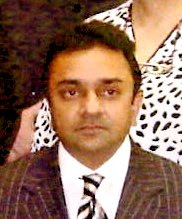
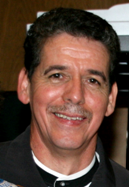
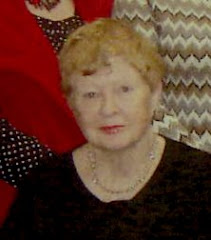





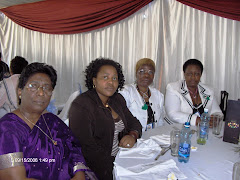





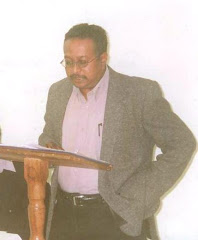





No comments:
Post a Comment